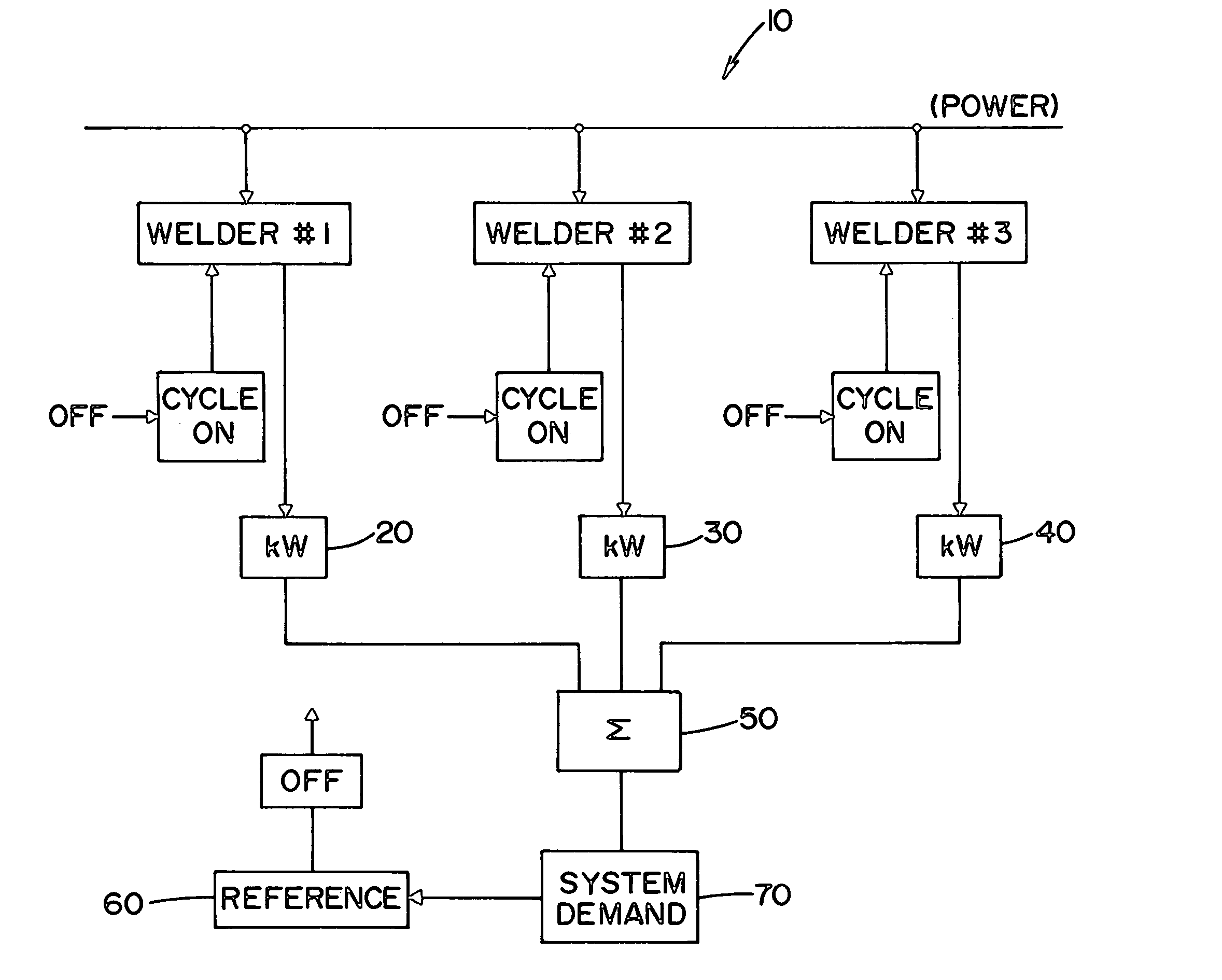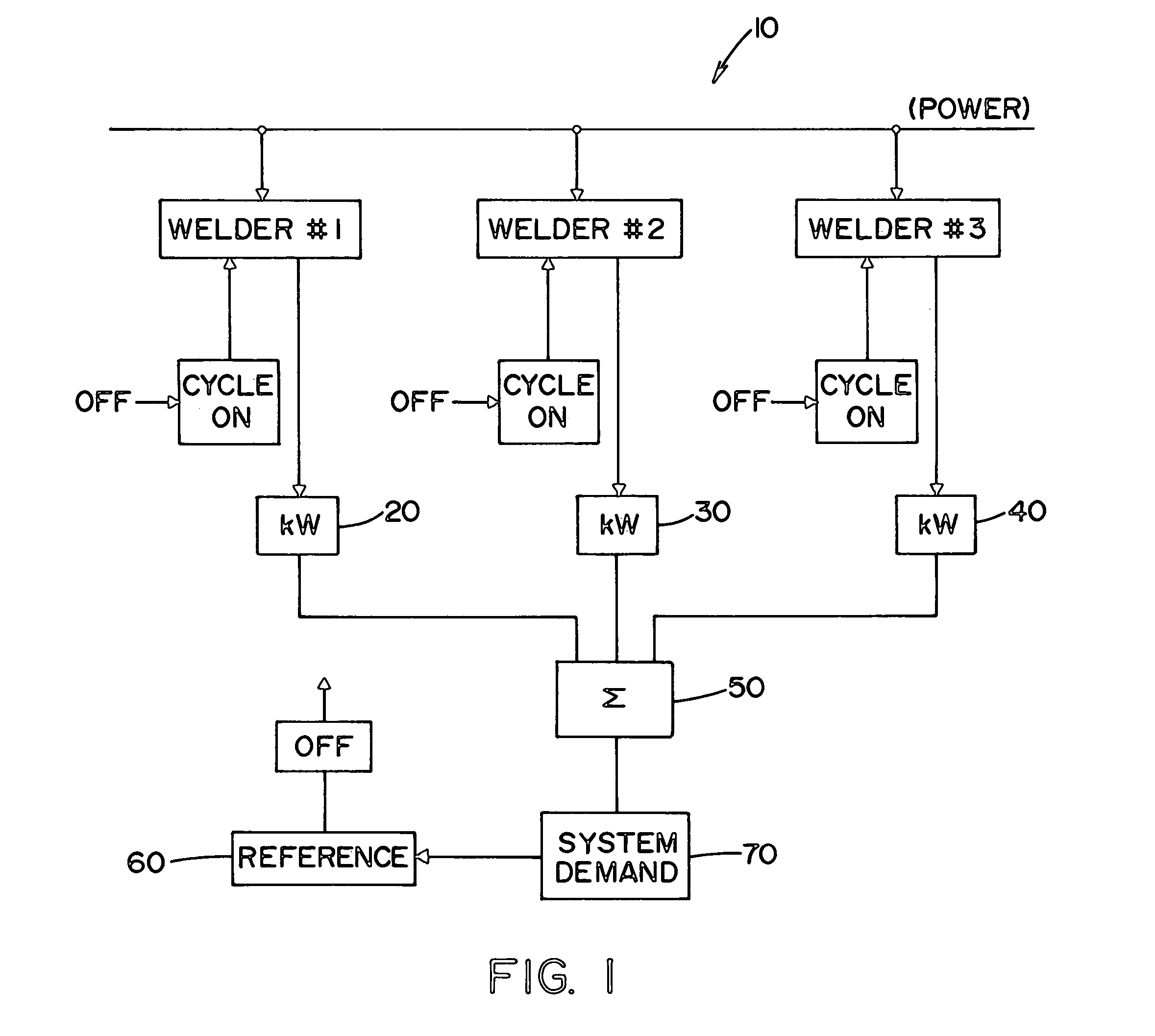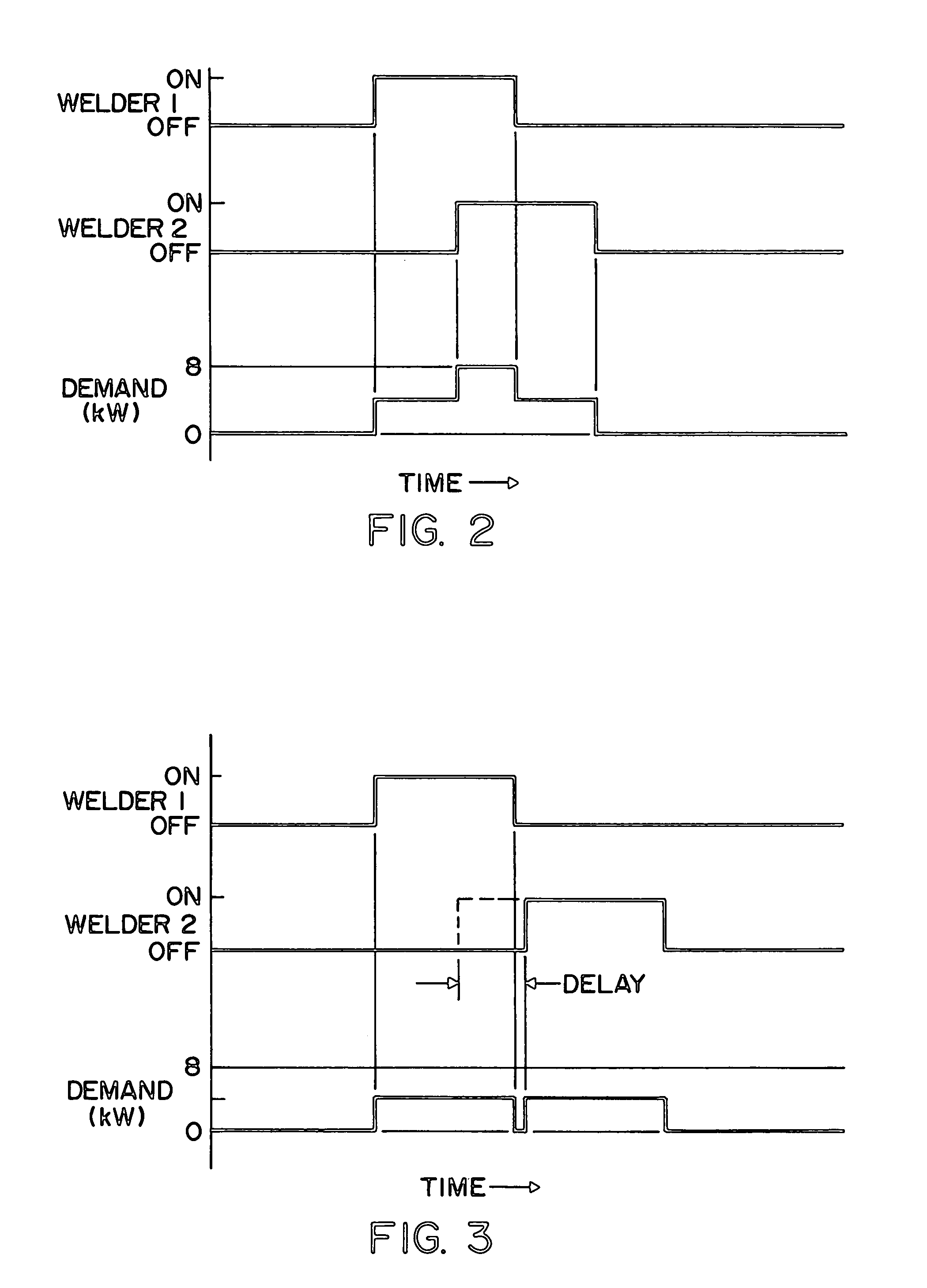System and method for monitoring and controlling energy usage
- Summary
- Abstract
- Description
- Claims
- Application Information
AI Technical Summary
Benefits of technology
Problems solved by technology
Method used
Image
Examples
Embodiment Construction
[0028] Referring now to the drawings, wherein the showings are for the purpose of illustrating the preferred embodiments of the invention only and not for the purpose of limiting the same, FIG. 1 illustrates an energy monitoring system 10 in accordance with the present invention. FIG. 1 illustrates three welders, welder #1, welder #2 and welder #3 being supplied power form a power source. As can be appreciated more welders or less welders can be monitored by the energy monitor system of the present invention. Typically, the power supplied to the welders is provided a local power supplier; however, some or all of the power could be supplied by cogeneration at a particular facility. Each of the welders are connected with or integrated with an energy monitoring device 20, 30, 40. The energy monitoring devices monitor the amount of energy consumed by each welder in kW over a particular period of time. The amount of energy being used by each welder is transmitted to a summation device 50...
PUM
| Property | Measurement | Unit |
|---|---|---|
| Energy | aaaaa | aaaaa |
Abstract
Description
Claims
Application Information
 Login to View More
Login to View More - R&D
- Intellectual Property
- Life Sciences
- Materials
- Tech Scout
- Unparalleled Data Quality
- Higher Quality Content
- 60% Fewer Hallucinations
Browse by: Latest US Patents, China's latest patents, Technical Efficacy Thesaurus, Application Domain, Technology Topic, Popular Technical Reports.
© 2025 PatSnap. All rights reserved.Legal|Privacy policy|Modern Slavery Act Transparency Statement|Sitemap|About US| Contact US: help@patsnap.com



